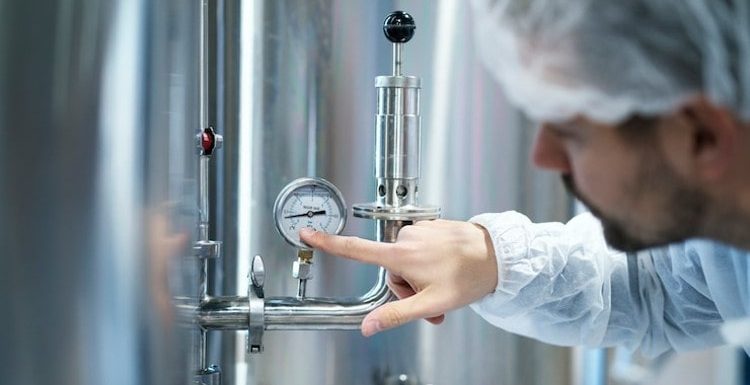
While it may not be obvious, our bodies are constantly subjected to pressure.
If you’re new to pressure measurement, understanding the physical characteristics and their basic terminologies can be quite confusing and difficult.
However, understanding the basics of pressure can help you while purchasing a pressure gauge, pressure controller, calibrator, pressure transmitter, transducer or sensor, or an air compressor like the secoh auto stopper.
Let’s dive further into the meaning and types of pressures.
What is Pressure?
By definition, pressure is a force applied perpendicular to the surface of an object per unit area. Mathematically, it is denoted as P = F/A.
The atmospheric pressure within our gravitational fields is known as barometric pressure. This pressure fluctuates based on the changing weather systems.
In simple terms, the combined energy of the gas or liquid in the atmosphere creates a force that acts equally on any kind of surface that it may be exposed.
Weather stations often use electronic sensors to measure atmospheric pressure. Due to the use of barometers to measure the pressure of air on a fluid like mercury, air pressure measurements were described as “inches of mercury.” However, today meteorologists described air pressure by using millibars (mb).
Types of Pressure
There are various types of pressures. Let’s understand them further.
-
Absolute Pressure
In this type of pressure, vacuum or air-free space is taken as a reference. The differing atmospheric pressure in various locations result in changes in absolute pressure.
Using an absolute pressure sensor can help you eliminate the references caused by differing atmospheric pressures, and focus on a specific range of pressure.
-
Gauge Pressure
The difference between atmospheric pressure and absolute pressure is known as gauge pressure or relative pressure. Gauge pressure sensors feature a vent that allows the device to use its locality’s atmospheric pressure as a reference point, and the measured pressure is then compared to the standard pressure at sea level.
The measured pressure can have positive or negative values. The positive values are called overpressure while the negative values are called under pressure or partial vacuum.
When a vessel is subjected to atmospheric pressure, you may want to ensure that it does not implode or explode due to the pressure. In this case, you can use a gauge pressure sensor to measure the difference between the internal pressure of the vessel and the atmospheric pressure on its external surface.
-
Differential Pressure
Differential pressure is described as the difference between any two applied pressures. While measuring pressure, if the reading and reference values are variable, you can calculate the differential pressure by subtracting one of these values from the other.
Differential pressure is vital to the industrial process systems as it can be used to monitor the filtration and flow of industrial systems. If a pipeline gets clogged, the change in the pressure of the flow will result in the increase or decrease of the differential pressure. By monitoring a pipeline’s differential pressure, you can ensure that they are clean, safe, and working efficiently.
Differential pressure is also involved in the pressurisation of aeroplane cabins. It gauges the pressure outside the plane and accordingly controls the pressure inside the cabin.
-
Sealed Pressure or Vacuum Pressure
In a vacuum, the absolute pressure is zero. As a perfect vacuum condition is only a theoretical value, a vacuum can only be partially achieved and is called a partial vacuum. If the absolute pressure is very low, it would indicate that the vacuum is high.
Sealed pressure is often used in sealed chambers to make it air-tight, measure the sealed pressure, and avoid any further changes to the pressure. It is also used to protect pressure transducers.
-
Bidirectional Pressure
Bidirectional pressure is a subcategory of gauge pressure and forms in reference to ambient atmospheric pressure in both positive and negative directions.
Bidirectional pressure can be a positive or negative reading. It can be read as a positive value above atmospheric pressure or a negative value below atmospheric pressure.
This pressure is often used to maintain pressurisation in hospital operating rooms and quarantine rooms in order to isolate the patient, maintain their health, and create a sterile environment.
To Sum It Up
There are a variety of pressures and each of them can also be affected by several factors.
If you’re looking to buy an efficient air compressor, pressure controller, pressure gauge, or any other pressure system, make sure to do a thorough research so you’ll know exactly what you’re looking for.
You can also buy an effective AVR unit to reduce any loud noises or vibrations caused by compressors.
